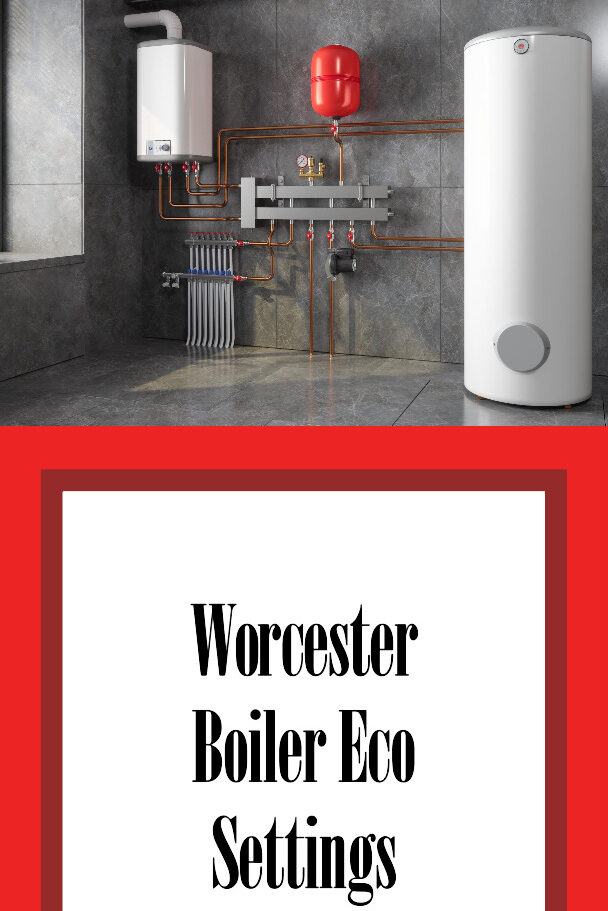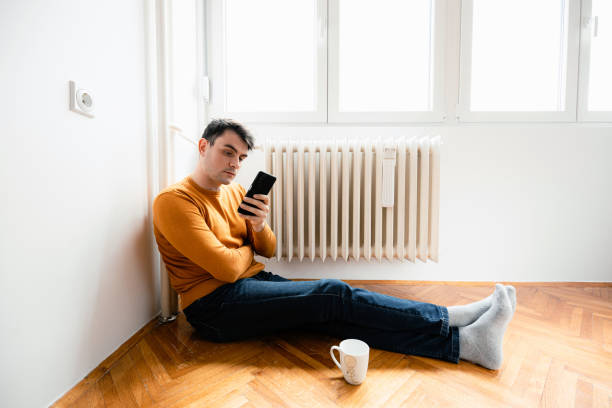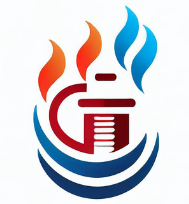Worcester is one of the most popular boiler brands in the UK. Their condensing combi boilers like the Greenstar range allow convenient control of both central heating and hot water temperature. Properly configuring these settings can improve efficiency and reduce energy costs.

To get optimal performance, it’s important to understand how to configure the key temperature settings:
| Setting | Description |
|---|---|
| Flow temperature | Temperature of water flowing to radiators |
| Return temperature | Temperature of water returning to boiler |
| Hot water temperature | Temperature of hot water for taps |
| Boiler temperature | Internal operating temperature of boiler |
Understanding flow and return temperatures in Worcester boilers
One of the most important things to understand when optimizing your Worcester boiler is the concept of flow and return temperatures.
Flow temperature refers to the temperature of the hot water that leaves the boiler to circulate through your radiators and heating system. The return temperature is the temperature of the water that has circulated through your radiators and returns back to the boiler.
The difference between these two temperatures is called the temperature differential or ΔT. Ideally, you want a ΔT of 20°C or more for optimal efficiency.
For example, if your boiler flow temperature is set at 80°C, you want the return temperature to be at least 60°C. This 20°C ΔT indicates your system is working efficiently.
Setting the flow temperature higher than needed will waste energy. Most modern condensing boilers like Worcester’s Greenstar range are designed for lower flow temperatures.
Combi boilers in particular work best with a flow temperature of 50-60°C. The thermostat dial on the front of your Worcester combi controls this flow temperature.
Turning the dial to a higher number increases the flow temperature. Each number represents a 5°C increase usually, so the difference between 3 and 4 could be 55°C vs 60°C.
Lower flow temperatures like 50°C allow the boiler to operate in condensing mode more often. This increases efficiency, reduces gas usage, and lowers heating bills.
However, lowering the temperature too much can mean the boiler has to work harder to heat the house. This cancellles out some of the savings, so finding the ideal balance is key.
The return temperature depends on your radiators and heating system, not the boiler temperature setting. Radiators designed for condensing boilers help ensure a 20°C ΔT.
A heating engineer can advise on suitable radiator models and help find the optimal boiler flow temperature for your system.
Worcester Boiler Hot Water Takes Too Long: Understanding the Causes and Solutions
In most homes, a boiler flow temperature of 55-60°C provides comfortable heating with maximised efficiency. Monitor your system’s return temperature to gauge this.
Minor adjustments up or down by 5°C can help strike the perfect balance between efficiency and heating comfort.
Hot water temperature is controlled separately, and should be set following the boiler’s instruction manual – usually between 55-60°C.
Understanding flow vs return temperatures is crucial to optimising your Worcester boiler. A qualified gas safe engineer can provide guidance specific to your home’s set up.
Setting hot water temperature on Worcester combi boilers
Worcester combi boilers give you convenient control over your hot water temperature. Unlike a regular boiler with a separate hot water cylinder, a combi heats water instantly on-demand.
The temperature is adjustable via a dedicated hot water temperature dial or control on the boiler.
Ideal hot water temperature is around 55-60°C for most combi boilers like the popular Greenstar range. Temperatures below 55°C present a risk of legionella bacteria growth.
Above 60°C wastes energy and increases the limescale buildup in hard water areas. Hotter water also poses a scalding risk.
Each number on the temperature dial represents an increase of 5-10°C. Mid-range settings around 3-4 are usually suitable for most homes.
Refer to your specific Worcester boiler’s manual for the exact temperatures. For the Greenstar CDi classic combi, the settings are:
- 1 = 10°C
- 2 = 30°C
- 3 = 55°C
- 4 = 65°C
- 5 = 75°C
- 6 = 85°C
So 3 or 4 would be ideal. Higher settings may be needed in winter for homes with reduced insulation.
Combi boilers heat water directly when you run a tap, rather than storing hot water. This “on-demand” system reduces energy wastage.
However, it also means there is a short delay before hot water starts flowing.
Worcester’s ECO mode eliminates this by maintaining a minimum boiler temperature.
When a tap is turned on, hot water flows instantly. The boiler then quickly tops its temperature back up after.
ECO mode offers maximum gas and water efficiency as the boiler isn’t constantly heating stored water. Just ensure the hot water temperature is set appropriately first.
Note: The combi boiler’s flow temperature dial controls your central heating water, not hot water.
Hot water is heated separately on-demand. Only the dedicated hot water dial or control changes this temperature.
If your boiler is providing hot water but your radiators are cool, the hot water setting is likely configured correctly but the central heating one needs adjusting upwards.
Speak to a heating engineer if you need assistance dialling in the optimal hot water temperature setting for your Worcester combi boiler and household needs.
Minor adjustments may be needed seasonally as hot water demand increases in winter versus summer.
Worcester Boiler Prices: Cost to Fit 2023
Adjusting central heating temperature
Besides hot water, adjusting your Worcester boiler’s central heating flow temperature is key for efficiency.
This is controlled separately from domestic hot water, via the main temperature dial or digital display.
An ideal flow temperature for central heating is 55-60°C for a condensing combi boiler like the Worcester Greenstar range.
For regular heat-only or system boilers, the flow temperature may need to be a bit higher – typically 65-70°C.
Turning the thermostat dial clockwise increases the flow temperature in increments of 5-10°C.
Your boiler manual will clarify exactly what temperatures each dial number corresponds to.
For example, on a Worcester Greenstar combi:
- 1 = 35°C
- 2 = 43°C
- 3 = 50°C
- 4 = 57°C
- 5 = 64°C
- 6 = 72°C
So a setting of 4 provides a nice balance of efficiency and heating comfort in most homes.
Lower flow temperatures allow the boiler to condense more often, increasing efficiency.
But don’t drop the flow temp too low, as the boiler will have to work harder and run longer to warm your home. This cancellles out savings.

Radiator size also impacts optimal flow temperature. Larger or newer radiators designed for condensing boilers can operate efficiently at lower temperatures.
Smaller radiators may struggle to warm rooms adequately if the boiler flow temperature is too low.
In summer, the boiler’s central heating flow can be set to the minimum setting without issue.
But in winter, the higher heating demand requires an adequately high, yet efficient, flow temperature.
Monitor your boiler’s operation and radiator performance over time to determine the optimal central heating flow temperature for your home heating needs and comfort.
Combi boilers also have an ECO mode that reduces boiler standby heat losses in central heating mode to maximise efficiency.
Ask your Worcester installer or qualified gas engineer to help identify the best central heating flow temperature and corresponding thermostat setting for your boiler model and home.
This will provide a good starting point which you can later fine tune further through trial and error during each season’s heating demands.
All About Worcester Boiler Pressure
Adjusting radiator temperatures
Your radiators play a key role in managing boiler return temperature for an efficient system.
Radiator size and models designed for condensing boilers will optimise performance.
The relationship between the boiler’s hot flow temperature and the cooler system return temperature matters most.
Aim for a ΔT (delta T) of 20°C or more for best efficiency.
So if your boiler flow temperature is 60°C, the water returning from radiators should be 40°C or lower.
Radiator valves allow adjusting the temperature room-by-room.
For example, you may want bedrooms cooler than living areas.
Turn valves clockwise to reduce flow and counterclockwise to increase it.
Balance radiator flow rates to avoid excessive cooling in any zones.
If rooms feel cool, check for cold spots on radiators which indicate sludge buildup.
Bleed these by opening the manual air vent on top while the system is running to flush sludge.
Proper system water treatment is crucial to prevent cold spots on radiators.
With a well-configured system, adjusting radiator valves provides convenient room-by-room comfort control without sacrificing boiler efficiency.
Conclusion
Optimizing your Worcester boiler’s temperature settings is crucial for efficiency and lowering energy bills.
The key settings to understand are:
- Flow temperature – Controls central heating water temperature. Keep between 55-60°C.
- Return temperature – The cooler temperature of water returning from radiators. Aim for a 20°C ΔT.
- Hot water temperature – Controls domestic hot water temp. Keep around 55-60°C.
- Radiator valves – Fine tune room temperatures by adjusting radiator flow.
- ECO modes – Reduce standby losses for maximum efficiency.
Refer to your boiler’s manual for specific temperature figures and operating instructions.
Work with a qualified heating engineer to properly configure these key temperature settings upon install and during annual servicing.
Monitor your boiler’s operation and radiators over time. Make minor seasonal adjustments to strike the perfect balance between efficiency and comfort.
Proper Worcester boiler temperature configuration reduces energy waste, lowers bills, and keeps your home cosy.
Take time to understand the key settings and optimise them for your particular home’s size, layout, and heating needs.
